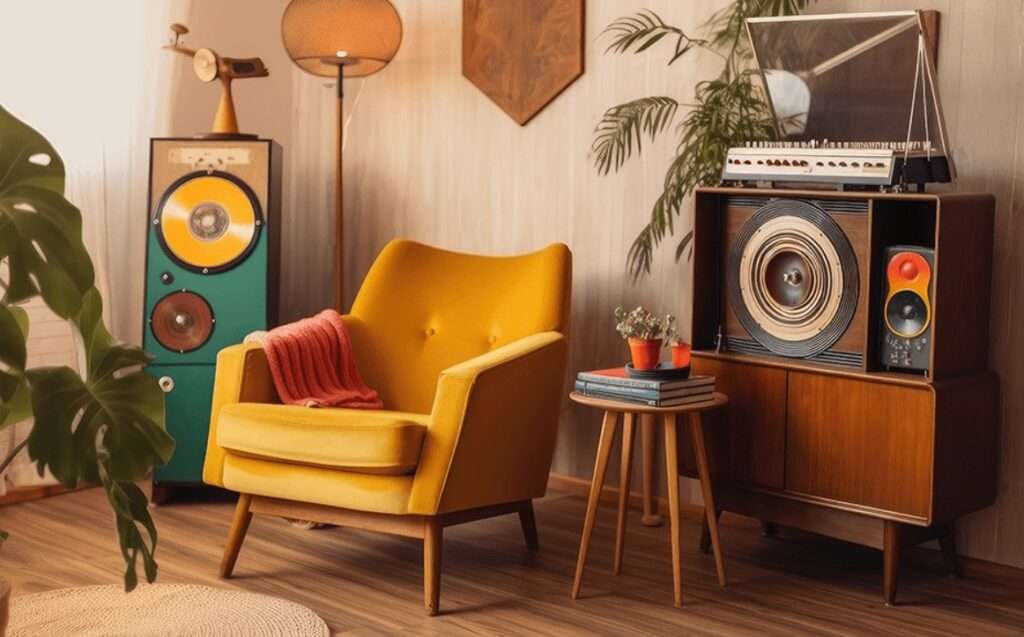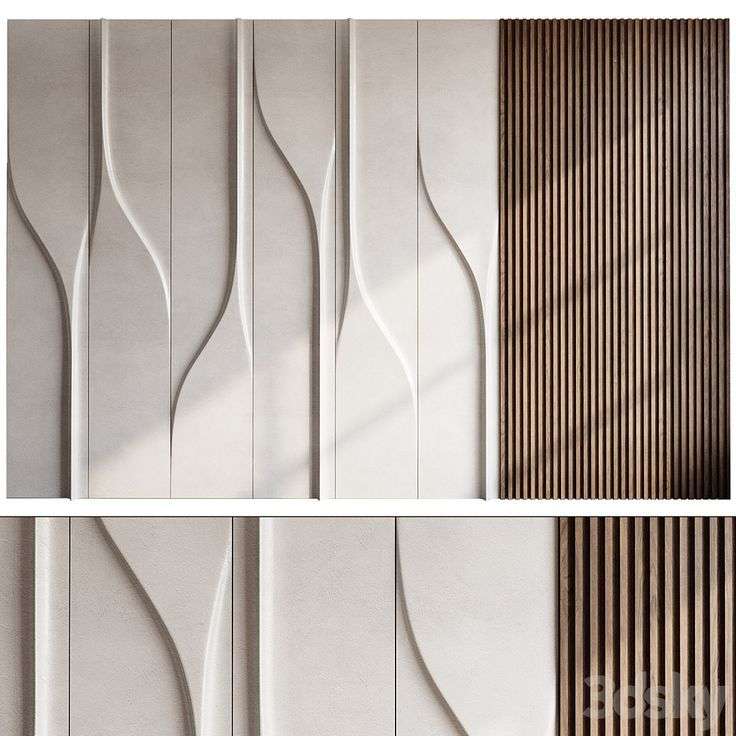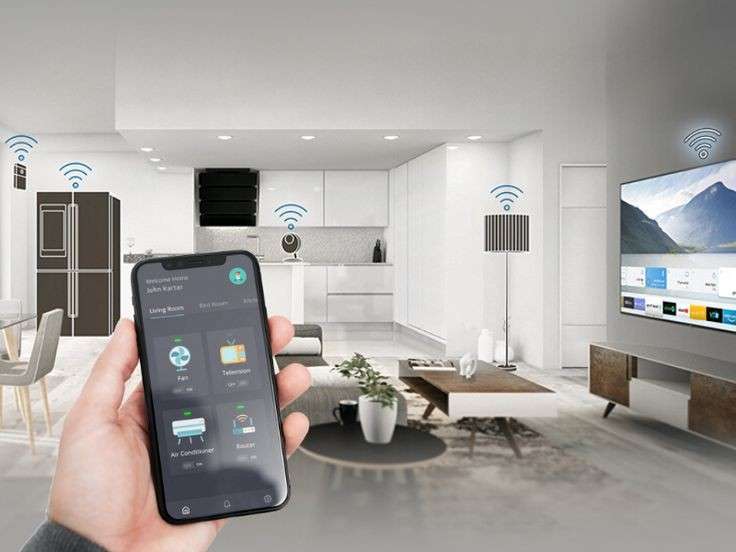In a world of ever-evolving design trends, there’s something timeless about vintage and retro styles that continue to captivate us. The charm of mid-century modern furniture, bold patterns, and nostalgic color schemes brings warmth, character, and a sense of history into modern interiors. If you’re looking to create a space that combines the best of the past with the sleekness of the present, incorporating vintage elements can be the perfect solution.
At Scale & Structure, we specialize in blending the old with the new to create unique, timeless interiors. In this blog, we’ll explore how to incorporate retro elements into modern spaces, ensuring a cohesive design that feels both fresh and nostalgic.

Why Vintage Revival?
Vintage design is more than just a trend—it’s a way to inject personality and character into a space. Retro elements can bring warmth and texture, making your home feel inviting and lived-in. Whether it’s a mid-century modern armchair, a classic record player, or vintage lighting, incorporating retro pieces into contemporary designs offers the opportunity to create a unique atmosphere that feels both nostalgic and modern.
Key Retro Elements to Integrate in Modern Interiors
1. Mid-Century Modern Furniture
One of the most iconic styles of the 20th century, mid-century modern furniture remains incredibly popular for its clean lines, functional design, and timeless appeal. Pieces such as Eames chairs, teak wood coffee tables, and low-profile sofas have a timeless quality that works in both contemporary and traditional spaces.
- Why it works: Mid-century modern furniture is functional yet stylish. The combination of sleek wooden frames and simple, clean lines blends seamlessly with modern design.
- Tip: Mix mid-century pieces with modern elements like sleek lighting fixtures or minimalist décor to maintain balance.
2. Bold Patterns and Prints
Retro design is synonymous with bold, eye-catching patterns. From geometric shapes to florals, stripes, and abstract motifs, these patterns add personality and energy to any room. Integrating bold prints into a modern space is an excellent way to introduce vintage flair without overwhelming the space.
- Why it works: Bold prints give a room a sense of playfulness and individuality. They can be used sparingly or as a statement piece.
- Tip: Introduce vintage patterns through accessories like throw pillows, rugs, or wall art to keep the design fresh and not too busy.
3. Retro Lighting Fixtures
Lighting is one of the easiest and most effective ways to incorporate retro style into a modern interior. Think about statement pendant lights, Sputnik chandeliers, and funky table lamps that offer both form and function.
- Why it works: Retro lighting fixtures often feature unique shapes and materials, which stand out as both functional and visually interesting.
- Tip: Choose a bold lighting fixture, like a mid-century modern chandelier, as the focal point of the room, and keep other elements minimal to avoid visual clutter.
4. Vintage Art and Wall Decor
Vintage art can be a great way to infuse your space with retro style. Whether it’s classic 60s pop art, old movie posters, or abstract paintings from past decades, vintage art adds a personal touch and a sense of nostalgia.
- Why it works: Vintage art provides a focal point and offers a conversation starter while remaining a subtle nod to the past.
- Tip: Frame vintage posters or paintings in contemporary frames for a modern twist on retro wall décor.
5. Wood and Warm Tones
Wood is an essential component of retro design, especially from the mid-century era. Incorporating wooden furniture or accents can instantly make a modern space feel warmer and more inviting. Dark woods like walnut or lighter options like oak are commonly seen in retro-inspired interiors.
- Why it works: Wood adds texture and warmth to a room, making the space feel both grounded and elegant.
- Tip: Pair wooden furniture with sleek, modern pieces like metal-framed chairs or glass tables to keep the balance between retro and contemporary.
6. Retro Appliances
For kitchens and dining areas, vintage-style appliances can be a fun way to bring a bit of retro charm into a modern home. Think colorful retro refrigerators, classic stovetops, or old-school blenders that remind you of the 50s or 60s.
- Why it works: Retro appliances add color and personality to otherwise neutral kitchens, infusing a sense of nostalgia while being functional.
- Tip: If you don’t want to overhaul your kitchen, consider adding a few retro accessories like a vintage-inspired kettle or a set of diner-style mugs.
How to Blend Retro and Modern Design
1. Balance Old and New
When incorporating vintage elements into a modern home, balance is key. Too many retro items can make a space feel like a museum, while too few may make the design feel disconnected. Focus on blending the past and present by mixing vintage and contemporary pieces thoughtfully.
- Tip: If your furniture is modern, integrate vintage elements through décor, textiles, or accent pieces like lamps and mirrors.
- Tip: Keep the color palette cohesive by pairing vintage pieces with neutral tones like white, gray, or beige to allow the retro elements to stand out without clashing.
2. Neutral Base with Retro Accents
Starting with a neutral color palette—such as whites, beiges, or grays—gives you the freedom to introduce vintage elements as accents. Retro décor works best when it’s introduced in moderation, such as through colorful cushions, retro artwork, or vintage furniture pieces.
- Tip: Use accent walls or feature furniture to introduce color or bold patterns, and allow the rest of the space to remain simple and modern.
3. Keep Functionality in Mind
When incorporating retro elements, it’s important to maintain the functionality and flow of your modern space. Choose pieces that serve both form and function, such as mid-century modern furniture with clean lines or retro lighting that provides ample light.
- Tip: Avoid overcrowding rooms with too many vintage pieces. Instead, curate a collection of items that feel purposeful and contribute to the space’s overall functionality.
4. Choose Timeless Retro Pieces
To ensure your vintage elements don’t feel outdated, opt for timeless retro pieces that have remained in style over the decades. This includes mid-century modern furniture, vintage lighting, and classic art pieces that have a lasting appeal.
- Tip: Look for high-quality vintage items that have stood the test of time. These pieces will not only last but also add timeless character to your home.
Why Choose Scale & Structure for Your Vintage-Inspired Interior Design?
At Scale & Structure, we specialize in blending retro charm with modern design to create stylish, functional, and timeless interiors. Our team of expert designers can help you integrate vintage elements into your home while ensuring a cohesive and balanced look that reflects your personal style.
Why Work with Scale & Structure?
- Personalized Design Solutions: We work closely with you to understand your preferences and design a space that marries modern aesthetics with retro nostalgia.
- Expert Retro Integration: Our team has the expertise to incorporate vintage elements into your home, from mid-century modern furniture to retro-inspired décor and lighting.
- Quality and Functionality: We focus on creating spaces that are not only visually stunning but also practical and functional for everyday living.
Ready to bring the charm of vintage design into your modern home? Contact Scale & Structure today to start transforming your space with retro flair and timeless style.



